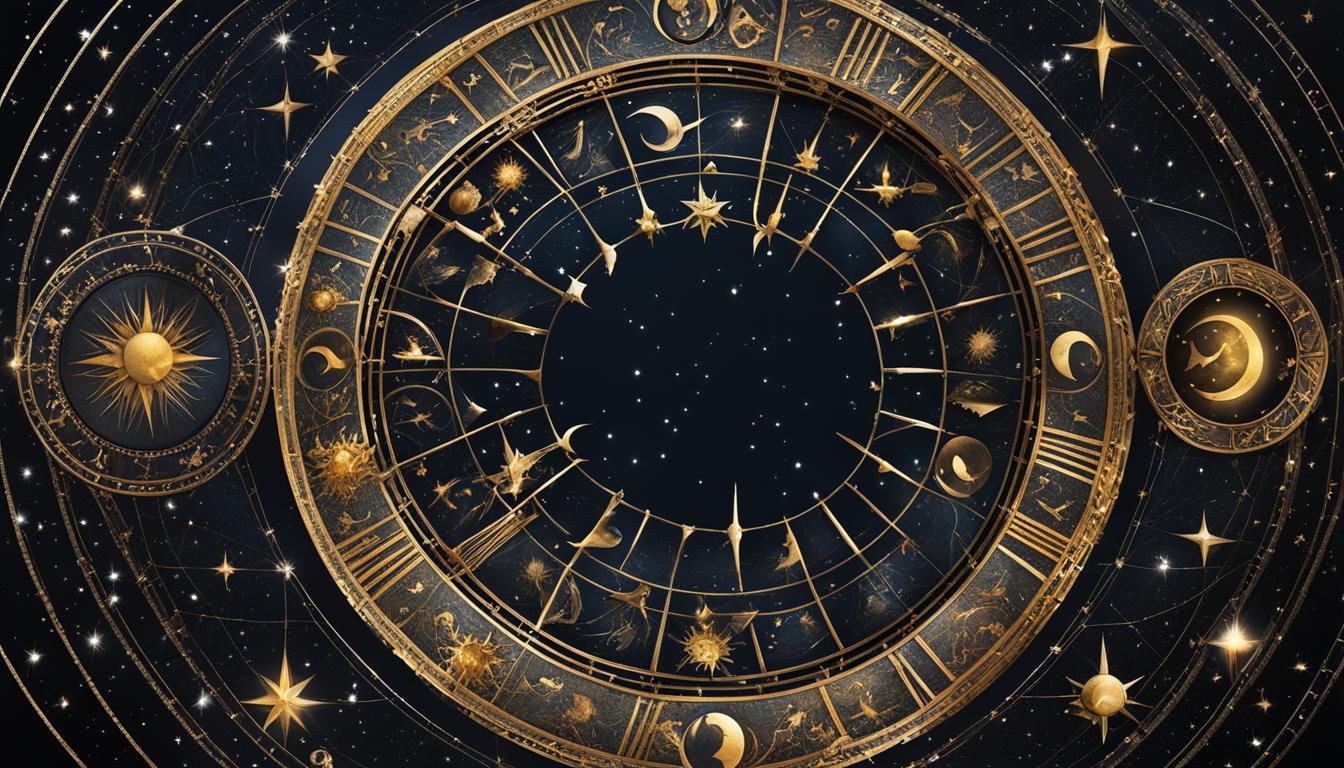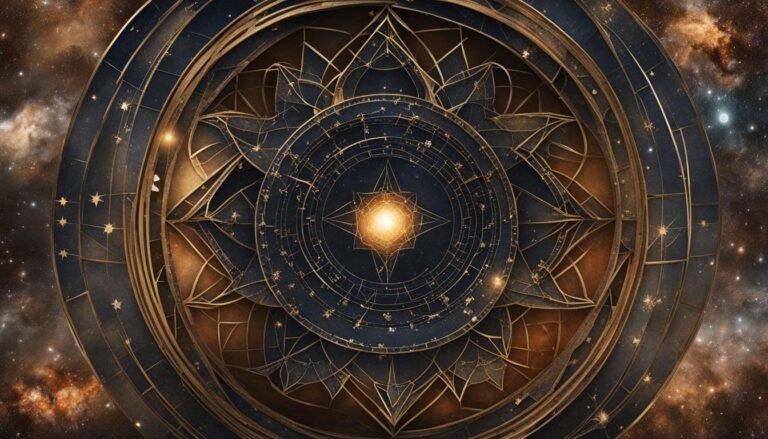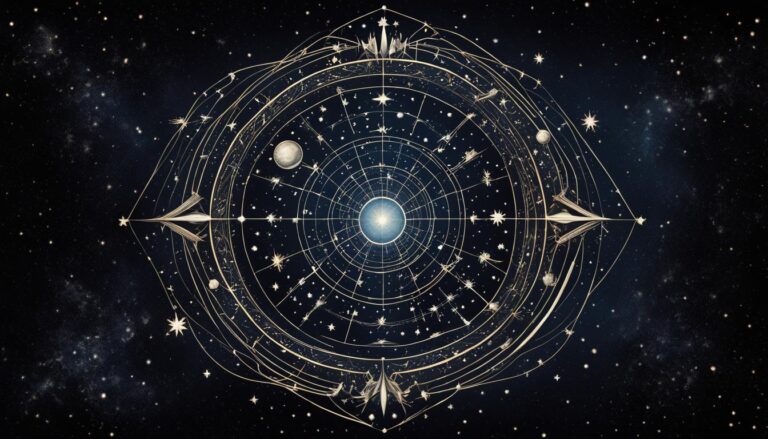What Group Of Constellations Are Used In Astrology?
Have you ever gazed up at the night sky and wondered which stars trace the story of your life? Unbeknownst to many, the group of constellations used in astrology, more commonly known as the zodiac constellations, have been human kinds cosmic compass for millennia. As you dive into your horoscope, you’re actually aligning with a celestial narrative written in the stars; each constellation corresponding to the astrological signs provides unique insights believed to influence our personalities and destinies.
The spiritual and celestial overlap in the fascinating realm of astrology, where the twelve traditional zodiac signs dance along the ecliptic – the Sun’s apparent path through the heavens. Even though these constellations serve as the backbone for astrology constellations, they are more than just symbolic. They connect us with an ancient tradition that has observed and contemplated the heavens long before us.
Key Takeaways
- The zodiac constellations mark the ecliptic path that the Sun appears to travel through each year.
- Astrology utilizes these constellations to form the basis of each zodiac sign.
- The twelve astrological signs each correspond to a constellation, from Aries to Pisces.
- Ophiuchus is recognized by astronomers but not traditionally in astrology.
- The historical and cultural significance of these constellations bridges ancient times to modern-day astrology practices.
- Understanding the relationship between constellations and astrological signs brings depth to the interpretation of horoscopes.
The Celestial Foundations of Astrology: Zodiac Constellations
When you look up at the night sky, the patterns you see have been a source of inspiration and guidance for countless generations. These celestial constellations, especially the group known as zodiac constellations for astrology, have roots that intertwine deeply with human history, culture, and science.

The compelling narrative of these astrological divisions is elegantly presented in Claudius Ptolemy’s benchmark 2nd-century work “Tetrabiblos”. Within its pages, the relationship between these twelve segments of the sky and their corresponding constellations is meticulously articulated. However, while the zodiac primarily served as an astrological framework, it wasn’t until the 17th century, with the advent of the telescope, that the zodiac constellations’ astronomical significance came to light.
The horizons of this celestial study expanded, allowing us to not only explore our own predispositions as reflected by our horoscope signs, but also to appreciate the stars that have ceaselessly navigated our course through the ages. From the historical inception to the contemporary horoscope columns, the zodiac continues to captivate the human psyche. Whether charting the fates or studying the night sky, the zodiac provokes a sense of wonder that has, throughout history, pushed us to better understand the cosmos and ourselves.
The Connection Between Zodiac Signs and Their Celestial Counterparts
As you delve into the world of astrology constellations, it’s fascinating to see how the zodiac constellations that we’re familiar with don’t perfectly align with their celestial counterparts in the sky. This variance sheds light on the intricate dance between the constellations and the Sun as it makes its journey across different parts of the sky throughout the year.
The Traditional Twelve: Zodiac Constellations Explained
Each of the twelve astrological signs we know so well is associated with a constellation that carries its name. However, you might be surprised to learn that the time the Sun spends in each of these constellations can greatly vary. Take, for example, the discrepancy between the extensive Virgo constellation and the much tinier Scorpius.
- Aries: Initiating spring, it’s a burst of astrological new beginnings.
- Taurus: Grounded in the richness of spring, Taurus exudes stability.
- Gemini: As spring gives way to summer, Gemini brings a dual breeze of change.
- Cancer: Warmth and nurturance peak as summer commences.
- Leo: With summer’s zenith, Leo roars with fiery confidence.
- Virgo: Late summer ushers in Virgo’s detailed harvest.
- Libra: Balanced scales introduce the autumn equinox.
- Scorpius: A brief yet deep dive into autumn’s transformation.
- Sagittarius: The archer points us towards winter’s explorations.
- Capricornus: Winter begins with Capricorn’s determination.
- Aquarius: Midwinter’s chill brings the water-bearer’s innovation.
- Pisces: As winter melts, Pisces’ intuitive dreams bloom into spring.
This distinctive duration, which can range from about 7 to 45 days, emphasizes the nonuniform nature between the zodiac constellations and their corresponding astrological signs.
Unveiling Ophiuchus: The ‘Hidden’ Constellation
When considering the astronomical zodiac, we encounter Ophiuchus, commonly left out of the astrological narrative. Despite its absence on the astrological chart, Ophiuchus holds its place in the sky, nestled between the constellations Scorpius and Sagittarius. Modern astrology may leave Ophiuchus out, yet the Sun’s passage through it from November 30 to December 17 is an astronomical fact that cannot be overlooked.
Whether you’re a seasoned astrology enthusiast or a curious observer, understanding the relationship between zodiac signs and astrology constellations provides a more comprehensive picture of our celestial tapestry.
What Group Of Constellations Are Used In Astrology?
When you look up at the night sky, you’re not just seeing stars; you’re gazing upon the tapestry of zodiac constellations that have guided human knowledge and culture for millennia. These celestial patterns are more than just figures of legend; they shape the foundation of astrology as we know it today.
The 12 Familiar Zodiac Constellations for Astrology
As you explore astrology, you’ll quickly become acquainted with the classic zodiac constellations that align with the twelve astrological signs. Each of these constellations carries with it a unique set of traits and stories that are reflected in the personalities and lives of those born under their influence. Here’s a quick snapshot:
- Aries (The Ram), a symbol of assertiveness.
- Taurus (The Bull), associated with strength and reliability.
- Gemini (The Twins), signifying duality and communication.
- Cancer (The Crab), representing emotional depth and intuition.
- Leo (The Lion), marking boldness and leadership.
- Virgo (The Maiden), embodying meticulousness and service.
- Libra (The Scales), denoting balance and harmony.
- Scorpius (The Scorpion), a sign of passion and power.
- Sagittarius (The Archer), indicating adventure and wisdom.
- Capricornus (The Sea-Goat), reflecting ambition and discipline.
- Aquarius (The Water-Bearer), symbolizing innovation and community.
- Pisces (The Fish), connected to empathy and creativity.
Exploring the 13th Player: Ophiuchus in the Ecliptic
A wildcard in the cosmos, Ophiuchus the “Serpent Bearer” sits snugly between Scorpius and Sagittarius along the ecliptic, the Sun’s apparent path. Even though traditional astrology might not acknowledge Ophiuchus in its horoscopes, this constellation has been recognized by astronomers for its distinctive place among ecliptic constellations. Holding dominion over the sky from late November until mid-December, Ophiuchus challenges the neat one-sign-per-month convention and introduces an engaging wrinkle into the astrological narrative.
Whether you subscribe to astrology for personal insights or enjoy the stories written in the stars, the zodiac constellations serve as a bridge connecting us to our ancient past and guiding us through the present. So the next time you read your horoscope, remember the cosmic dance of these celestial figures and consider the enigmatic role of Ophiuchus, a constellation that reminds us the universe holds many secrets yet to be explored.
Astronomy Versus Astrology: The Contrast in Constellations
When you gaze up at the night sky, you’re not just looking at sparkling dots. Those stars form patterns known as celestial constellations, which lie at the heart of a millennia-old debate: astronomy vs astrology. To the astronomer, these constellations act as a map, aiding in the navigation of the cosmos. The lines drawn between stars are more than just imaginary; they are a part of scientific observation and space exploration. Astrologers, however, perceive these patterns differently. For them, it’s about symbolic interpretations that suggest human traits and predict individual destinies based on the time of one’s birth.
The division between these two perspectives is pronounced when it comes to the zodiac. Astrology hones in on 12 astrological signs, imagining a celestial influence on humans. Yet, the actual astronomical alignments tell a diverse story. Earth’s axial precession—a gentle wobble on its axis—has shifted our relationship to these constellations. This precession alters the dates during which the Sun appears to pass through each zodiac constellation. Thus, the neat one-month alignment that astrology asserts was last accurate thousands of years ago, and the variance now extends to about a month.
This growing gap fundamentally separates the astrological signs from their celestial counterparts. Despite the divergence, each discipline continues to inspire wonder and fascination. Whether you’re consulting your horoscope or peering through a telescope, the celestial constellations invite you to ponder your place in the cosmos. Yet, understanding these differences can enrich your appreciation for both the symbolic journey through life’s challenges and adventures, as astrology proposes, and the expansive pursuit of knowledge that is the essence of astronomy.
FAQ
What group of constellations are used in astrology?
The group of constellations used in astrology are called the zodiac constellations, which include Aries, Taurus, Gemini, Cancer, Leo, Virgo, Libra, Scorpius, Sagittarius, Capricornus, Aquarius, and Pisces. These represent the 12 astrological signs.
What are the celestial foundations of astrology?
The celestial foundations of astrology are based on the zodiac circle, which is comprised of the zodiac constellations that lie along the ecliptic—the apparent path the Sun takes through the sky over the course of a year. These constellations are central to the creation of horoscopes.
How did the concept of the zodiac circle come about?
The zodiac circle originated in Babylon around the 5th century B.C., where astronomers divided the band of the sky that the Sun, Moon, and planets travel through into 12 equal parts named after different creatures and objects. These segments were associated with times of the year and later evolved into the zodiac signs.
How do the traditional twelve zodiac signs correspond to their celestial counterparts?
The traditional twelve zodiac signs each correspond to a zodiac constellation present along the ecliptic. However, due to Earth’s axial precession, there’s a misalignment between astrological dates and the Sun’s actual position within these constellations today.
What is Ophiuchus, and how does it fit into astrology?
Ophiuchus, sometimes referred to as the ‘hidden’ constellation, is located between Scorpius and Sagittarius. Although not formally recognized in astrology, it is situated on the ecliptic and affects the neat one-to-one correspondence between the traditional twelve astrological signs and their respective constellations.
Are the same constellations used in both astronomy and astrology?
While both astronomy and astrology recognize the zodiac constellations, they serve different purposes in each field. Astrology uses these constellations symbolically to provide insights into human life, whereas astronomy uses them for spatial orientation and identifying other celestial bodies.
Can you list the 12 familiar zodiac constellations for astrology?
Certainly! The 12 familiar zodiac constellations that correspond to the astrological signs are: Aries (The Ram), Taurus (The Bull), Gemini (The Twins), Cancer (The Crab), Leo (The Lion), Virgo (The Virgin), Libra (The Scales), Scorpio (The Scorpion), Sagittarius (The Archer), Capricorn (The Sea-Goat), Aquarius (The Water-Bearer), and Pisces (The Fish).
How does Ophiuchus affect the traditional astrology system?
Ophiuchus, the 13th constellation located on the ecliptic, intersects the Sun’s path but is not recognized by traditional astrology, which sticks to a 12-sign system. Its presence is mostly an astronomical consideration and does not alter the astrological practices based on the traditional twelve zodiac signs.
What is the core difference between astronomy and astrology when it comes to constellations?
The core difference between astronomy and astrology in terms of constellations is their application. Astronomy uses constellations for scientific observation and navigation, while astrology interprets constellations for predictive and descriptive purposes associated with human traits and life events.







